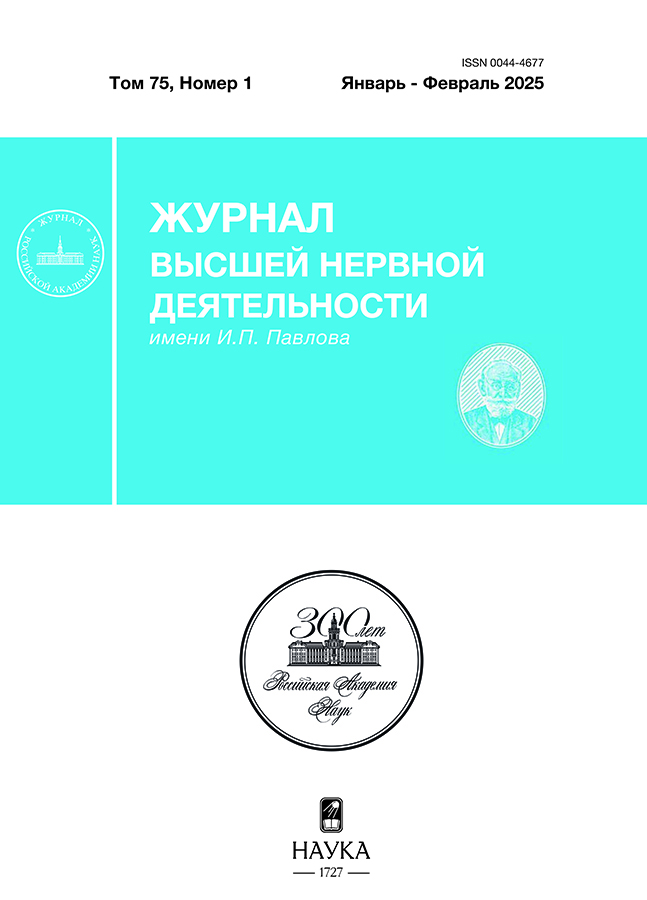Variability of the boundaries of semantic priming: the role of informativeness of primes
- Authors: Filippova M.G.1, Chopchik D.Y.1, Gnedykh D.S.2, Kostina D.I.2, Perikova Е.I.3
-
Affiliations:
- Bekhtereva Institute of the Human Brain of the Russian Academy of Sciences
- Saint Petersburg State University
- London Metropolitan University
- Issue: Vol 75, No 1 (2025)
- Pages: 24-30
- Section: ФИЗИОЛОГИЯ ВЫСШЕЙ НЕРВНОЙ (КОГНИТИВНОЙ) ДЕЯТЕЛЬНОСТИ ЧЕЛОВЕКА
- URL: https://ruspoj.com/0044-4677/article/view/682786
- DOI: https://doi.org/10.31857/S0044467725010038
- ID: 682786
Cite item
Abstract
The study was aimed to identify which account, inhibition or episodic retrieval, is more relevant for newly learned semantic pairs. At the learning stage, 34 participants were presented with nonwords matched with images of unknown fruits as semantic referents. At the testing stage, we used a semantic priming paradigm with a color identification task, where in 50% of cases, images of fruits were targets and their names (pseudowords) were primes, and in the other 50%, vice versa, the names were used as targets and the images as primes. The congruence of the primes (whether the images and their learned names matched each other) was also varied. In parallel, oculomotor activity was recorded. We found positive priming for image primes in the congruent condition and negative priming for word primes regardless of their congruence. The results did not allow us to make a choice in favor of one of the accounts, however, by revealing the expansion of the negative priming effect boundaries, they did demonstrate the ability of the cognitive system to flexibly switch between more general and more specific levels of processing depending on the characteristics of the stimuli.
Full Text
About the authors
M. G. Filippova
Bekhtereva Institute of the Human Brain of the Russian Academy of Sciences
Author for correspondence.
Email: filippova2margarita@gmail.com
Russian Federation, Saint Petersburg
D. Yu. Chopchik
Bekhtereva Institute of the Human Brain of the Russian Academy of Sciences
Email: filippova2margarita@gmail.com
Russian Federation, Saint Petersburg
D. S. Gnedykh
Saint Petersburg State University
Email: filippova2margarita@gmail.com
Russian Federation, Saint Petersburg
D. I. Kostina
Saint Petersburg State University
Email: filippova2margarita@gmail.com
Russian Federation, Saint Petersburg
Е. I. Perikova
London Metropolitan University
Email: filippova2margarita@gmail.com
United Kingdom, London
References
- Костина Д.И. Косвенное измерение негативного прайминг-эффекта. Психология. Журнал Высшей школы экономики. 2023. 20(1): 107–128.
- Семенова М.А. Современные и классические представления о негативном прайминге. Сибирский психологический журнал. 2023. 90: 175–187.
- Ухтомский А.А. Доминанта как рабочий принцип нервных центров. Русский физиологический журнал. 1923. Т. VI. В. 1–3. С. 31–45.
- Filippova M.G. Does Unconscious Information Affect Cognitive Activity: A Study Using Experimental Priming. Span. J. Psychol. 2011. 14(1): 17–33.
- Frings C., Bermeitinger C., Wentura D. Center-surround or spreading inhibition: which mechanism caused the negative effect from repeated masked semantic primes? Exp. Psychol. 2008. 55: 234–242.
- Houghton G., Tipper S. A model of inhibitory mechanisms in selective attention. In: Dagenbach, Dale and Thomas Carr (eds.). Inhibitory Processes of Attention, Memory and Language. Academic Press, Florida. 1994. Pp. 53–112.
- Kahan T.A., Slowiaczek L.M., Harrison A.C., Bogue C.M. Temporal and sequential negative priming generalise across visual and auditory modalities and are dependent on relative rather than absolute speed. Q. J. Exp. Psychol. 2023. 76(4): 922–941.
- Labossière D., Leboe-McGowan J. Specific and non-specific match effects in negative priming. Acta Psychol. 2018. 182: 138–153.
- Maciejewski G., Klepousniotou E. Disambiguating the Ambiguity Disadvantage Effect: Behavioral and Electrophysiological Evidence for Semantic Competition. Exp. Psychol. Learn. Mem. Cogn. 2020. 46(9): 1682–1700.
- Maciejewski1 G., Rodd J.M., Mon-Williams M., Klepousniotou Е. The cost of learning new meanings for familiar words. Lang. Cogn. Neurosci. 2019. 35(2): 188–210.
- Milliken B., Joordens S., Merikle P.M., Seiffert A.E. Selective attention: A reevaluation of the implications of negative priming. Psychol Rev. 1998. 105(2): 203–229.
- Neumann E., McCloskey M. S., Felio A.C. Cross-language positive priming disappears, negative priming does not: Evidence for two sources of selective inhibition. Mem. Cognit. 1999. 27: 1051–1063.
- Storm B.C., Patel T.N. Forgetting as a Consequence and Enabler of Creative Thinking. J. Exp. Psychol. Learn. Mem. Cogn. 2014. 40(6): 1594–1609.
Supplementary files











